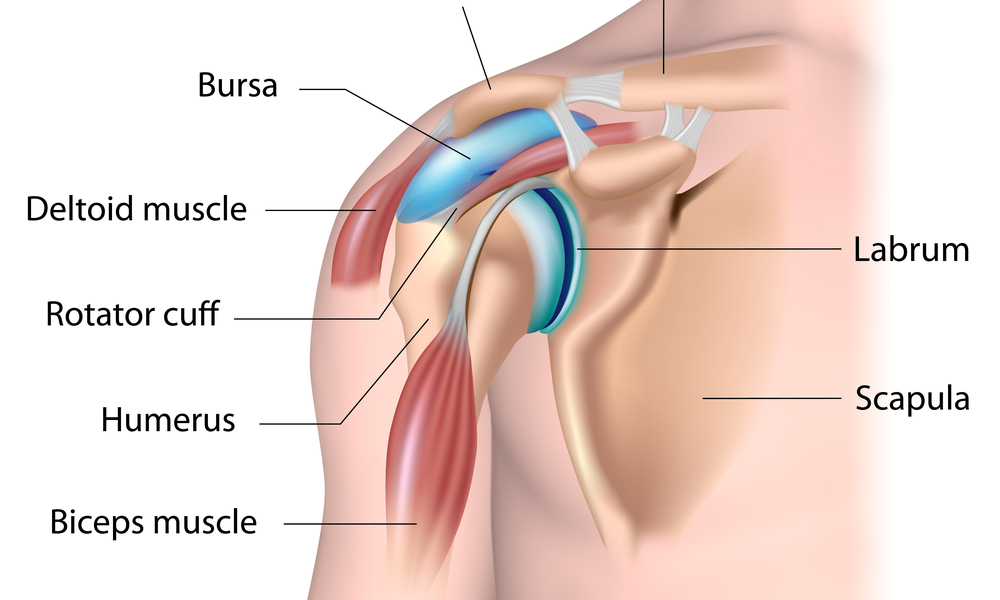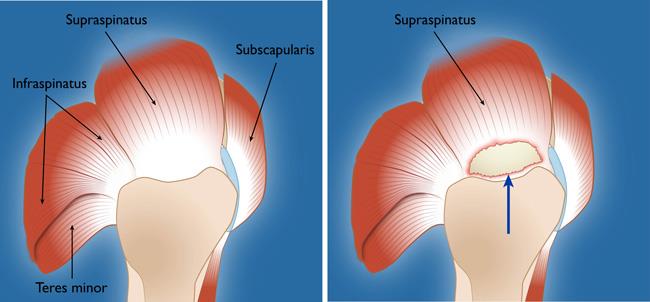The Most Common Shoulder Injuries: Is It a Rotator Cuff Tear, Labrum Tear, or Something Else?
Labrum tears and rotator cuff tears are some of the most common shoulder injuries. Each of these conditions can cause neck and shoulder pain, reduced dexterity, limited range of motion, and inability to participate in sporting activities that involve throwing. Our shoulder specialists list their causes and symptoms to differentiate between them.
Here is everything you need to know:
What Is a Labrum Tear?
The labrum cartilage looks like a cup-shaped rim that stabilizes the ball-and-socket of your shoulder joint. It serves as an attachment site for bones, ligaments, and muscles present in the area. Due to this crucial position, labrum tears cause partial/complete shoulder dislocation if the problem goes undetected.

If the labrum tear occurs in the shoulder joint’s upper-half, we call it a SLAP (Superior Labrum Anterior and Posterior) tear. If it affects the bottom-half of the shoulder socket, we call it a Bankart tear or reverse Bankart tear, depending on its location.
The leading causes of labrum tear injuries include overuse, repetitive movement, falling on an outstretched arm, or targeted trauma.
Labrum tear symptoms include:
- A dull ache or shoulder pain
- The loss of joint strength and flexibility
- Reduced range of motion
Besides this, your shoulder can catch or produce a popping sound when you move. Treating this instability prevents further impairment.
What is a Rotator Cuff Tear?
The rotator cuff consists of four muscles that connect your upper arm to the shoulder blade. These muscles enable your shoulder to move in multiple directions, rotate, and lift objects. Common rotator cuff tear causes include:
- Overuse to the rotator cuff muscles
- Applying prolonged pressure
- Athletic activities that require repetitive movements due to sports (i.e. tennis, football or baseball)
- Lifting heavy objects
- Falling directly on the lateral shoulder

Symptoms include difficulty in movement and lifting of heavy objects, followed by excruciating pain. You may also experience significant weakness in the affected area. Additionally, you may hear a clicking or popping sound whenever you move your arm, especially in an upwards direction or overhead.
Other Types of Shoulder Injuries
Your shoulder might hurt due to a muscle strain or sprained shoulder. Symptoms for these injuries are similar to rotator cuff tears and labrum tears, which leads many people to believe they may have a more serious injury.
Here are the main differences between these injuries:
Wear and tear of muscles and tendons cause a strained shoulder and restricted movements. These occur when you carry a heavy load, have a poor posture, or through repeated overhead movements. Pain is usually low grade, clicking is not present, and significant weakness is not present.
- Shoulder Sprain
Excessive friction, overuse, or blunt-force trauma often affects the tissues between two shoulder bones. When this happens, you suffer from shoulder pain, tenderness, and inflammation in the shoulder region. Usually pain and soreness are more mild. Rest and gentle exercise can help heal this condition.
Shoulder Pain Treatments: How Can Physical Therapists Help?
Physical therapy for shoulder pain often serves as the first step towards recovery. Regardless of the type of shoulder injury, our shoulder specialists can help you. We will conduct a complete examination to identify the cause of your shoulder pain.
Most shoulder pain treatment plans include:
- Manual therapy to reduce pain and other symptoms
- Strengthening exercises for affected muscles in the shoulder region
- Flexibility and stretching exercises to improve the complete range of motion
- Ice/heat stimulation to soothe the shoulder region
- Rectification of disrupted and slow movements
- Therapeutic taping for labrum tear treatment or rotator cuff treatment
Our shoulder specialists evaluate your posture, strength, and range of motion to assess your functional limitations. The assessment determines the true source of pain during the consultation. We use all these details to develop a personalized shoulder muscle pain treatment strategy to address individual needs.
Parting Words
In conclusion, there are various causes of shoulder pain. The most common shoulder injuries include shoulder strains, shoulder sprains, labrum tears, and rotator cuff injuries. Most of these conditions have overlapping symptoms. Understanding their causes and differences prevents misdiagnosis. Seeking medical support from an experienced shoulder specialist help ensure that you heal quickly and return to all activities without limitations.
Looking for a shoulder specialist near you? Contact Specialized Physical Therapy to book an appointment or call us @ 201-773-8851.
